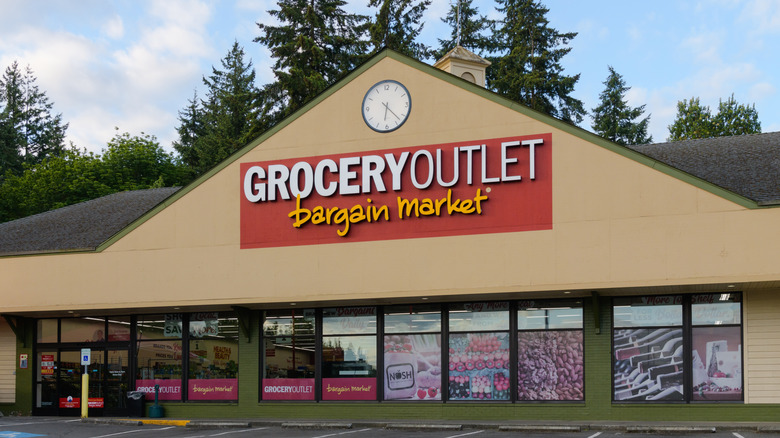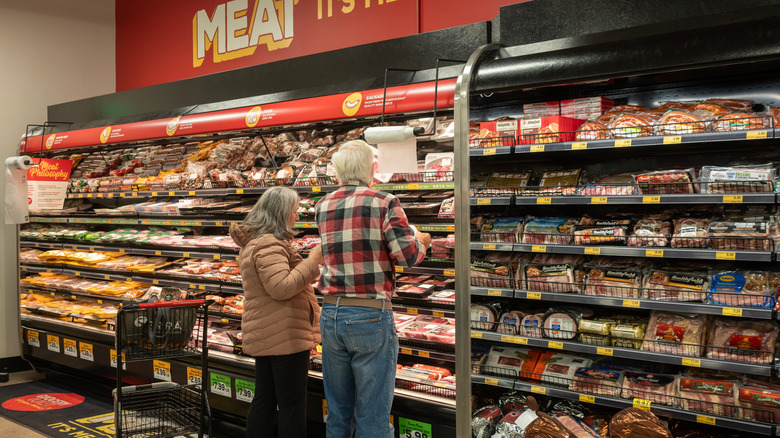How Foods End Up At Grocery Outlet
Costco, Sam's Club, and Aldi are all popular retailers where shoppers can snag a discount, competing with the most overpriced U.S. grocery store chains. But while not as well known across the country, Grocery Outlet has low prices that can rival them at its more than 500 locations. The discount chain features substantial price reductions on brand name products, and it's able to offer those price cuts by using opportunistic buying to get what it sells from manufacturers.
California-based Grocery Outlet buys products that manufacturers have too much of due to things like surplus inventory, packaging changes, or manufacturing overruns, when more of a product was made than was needed. Manufacturers want to get rid of those products, so Grocery Outlet buys them at a cheap price, and then sells them at a big discount. The chain's prices are an average of 40% lower than a regular supermarket, and its super-reduced Wow! Items are 40% to 70% cheaper. Getting products this way means that what's on Grocery Outlet's shelves changes all the time. That can be frustrating if you really like certain items, but the idea that you never know what products and bargains you'll find can be a draw that creates regular customers.
Most of the chain's stores are independently operated, with Grocery Outlet getting a share of the profits. The individual owners choose what to stock in their stores from everything the chain buys from manufacturers, selecting what they believe will appeal to shoppers in their communities.
What else you can buy at Grocery Outlet's hundreds of stores
Grocery Outlet also sells fresh items like meat, eggs, milk, and produce, which aren't packaged products it can acquire through opportunistic buying. Instead, it gets them for its stores the same way supermarkets do, but sells them at either the same price or less than the lowest supermarket price in the area. It's also introduced its own "GO" store brands, including Simply GO for regular groceries, GO Home & Haven for home and personal care items, and GO Paw & Pamper for pet products. Store brands also help customers save money, as do tips like shopping for groceries just once a week, and knowing when to avoid going to the grocery store.
Grocery Outlet was founded by Jim Read in 1946 as a San Francisco military surplus store with big price markdowns. It was nearly three decades later, in 1973, when the first independent operator store opened in Redmond, Oregon. Another 26 years went by before it began selling fresh produce, with meat sales added a few years later. The chain has now grown to 533 stores in 16 states. There had been Grocery Outlets in just 10 Western and mid-Atlantic states, with more than half of them in California, until 2024. Then it bought United Grocery Outlet, gaining 40 new stores in six Southern states, a region it hadn't been in before.

